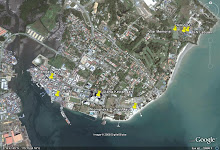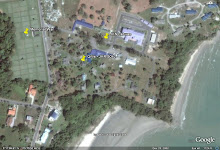



The origins of cancer
By Datuk Dr IBRAHIM WAHID
We’re introducing a new column on cancer called Living with Cancer. It’s a monthly columBy the Malaysian Oncological Society (MOS) in collaboration with sanofi-aventis Malaysia. This week, we take a general look at cancer.
THE word cancer originated from the Greek word “karkinos”. In English, this term translates into “carcinos” or “carcinoma”.
Hippocrates was the man that gave cancer its name. Also known as the Father of Medicine, he was the first person to clearly describe the differences between benign (non-cancerous) and malignant (cancerous) tumors1.
Hippocrates first noticed that blood vessels surrounding a malignant tumour looked like the claws of a crab and therefore proceeded to name his observation “karkinos”, or crab in English.
Cancer is not a disease of modern civilisations. The earliest recorded history describing cancer was found between 3000 BC to 1500 BC1. Details of medical conditions consistent with modern descriptions of cancer were found amongst the inscriptions of two papyrus scrolls of Egypt, known as the “Edwin Smith” and “George Ebers” papyri1.
The burden of cancer
Today, cancer remains one of mankind’s most feared diseases. Approximately 10.9 million people around the world are diagnosed with cancer every year, with almost half of these (45%) coming from Asia2.
Up to 24.5 million people worldwide were estimated to have received a diagnosis of cancer in the last five years2.
And each year, an estimated 6.7 million people die as a result of cancer, representing 12% of total deaths that occur annually2.
Cancer is one of the major health problems in Malaysia. It is now one of the leading causes of death among medically certified deaths, with lung cancer being the most common of all cancer related deaths3.
The National Cancer Registry received close to 43,000 notifications of cancer from Malaysian residents in 20034. Cancer occurs at all ages. The median age for cancer diagnosis was 59 years old among Malaysian men and 53 years old among Malaysian women4.
The most common cancers found in men over 50 years old are cancers of the lung, colon, rectum, nasopharynx, prostate and stomach. In women over 50 years old, cancers of the breast, cervix, colon, uterus, lung and rectum were most common4.
The evolution of modern treatment
The understanding of cancer and its treatments have undergone tremendous evolution since the times of the pharaohs to what it is today.
Back in ancient Egyptian civilisations, magic and religion were very much part of daily lives. Gods and demons were believed to be the cause for many ailments.
Treatment for cancer therefore, often involved supernatural elements, and the first recourse often involved making appeals to a deity. Priests and magicians played important roles, alongside with physicians.
Inscriptions in papyrus scrolls detailed the use of ointments, enemas, caster oil, suppositories and poultices in fighting various forms of cancer, often in addition to supernatural elements.
Following the decline of Egypt, medical and scientific development began to take place in Greece and Rome. Then, Hippocrates, together with another physician named Galen, began to revolutionise the practice of medicine through the use of reason and logic, slowly removing it from the grips of superstitions and magic1.
Hippocrates and Galen believed that human diseases are natural physical processes and hypothesised that cancer was the result of an excess of black bile1.
The Renaissance period saw voyages of discoveries that brought a surge in knowledge and new learning. Up till this time, a variety of remedies were used in the form of arsenic-containing creams and pastes.
The invention of the microscope in the late 17th century added much needed momentum in the quest to understand cancer, enabling closer observations on how cancerous cells behave.
The discovery of the lymphatic system in the late 17th century brought an end to Galen’s “black bile” theory. The understanding and treatment of cancer began to take on a new path, and new theory suggests that it was the result of abnormalities in the lymph and lymphatic system1.
It was not until the 18th century that a modern era in the science of cancer began to emerge. Two French physicians, Jean Astruc and Bernard Peyrilhe, took the very first steps and conducted research that give birth to modern experimental oncology1.
Systematic experiments on cancer were performed, leading to oncology as a medical specialty.
With the discovery of anaesthesia in 1844, surgical procedures flourished and classical cancer operations such as mastectomy (surgical removal of the breast) began to develop, changing the treatment paradigm for cancer.
The 19th, 20th and 21st centuries marked tremendous leaps in research, discoveries and developments in cancer treatment as well as improved understanding of its etiology. It is also during these times that the development and use of chemical compounds (chemotherapy) to treat cancer began to play a central role, alongside radiation and surgery.
Cancer as we know it today is much more complicated than what early scientists hypothesised. It is a class of diseases in which a group of cells display traits of uncontrolled growth, invasion into and destruction of nearby tissues, and sometimes metastasis (spread to other locations in the body via the lymphatic system or blood)5.
Nearly all cancers arise from abnormalities of genetic materials within cells. These abnormalities may be caused by carcinogens (cancer-causing agents) such as tobacco smoke, radiation, certain chemicals or infectious agents5.
Cancer therapy in the modern era
The discovery of various chemical agents during World War I and II kick-started the use of chemicals in fighting cancer.
During World War II, nitrogen mustard was used as ammunition for chemical warfare. Soldiers exposed to this gas were found to have abnormally low counts of white blood cells. Nitrogen mustard was then thought to have an effect on rapidly growing white blood cells.
Subsequent administration of it to a number of patients with lymphoma proved to be effective, albeit only temporarily.
This discovery spearheaded research into the use of chemical compounds for cancer treatment. Up to the 1980s, only a few chemical compounds were discovered and their use caused various toxicities.
However, since the 1990s, newer, more effective and safer chemotherapy compounds were discovered and have been in use for the treatment of cancer until this present day.
Stage IV colorectal cancer is one good example to illustrate how treatment advancements have extended the survival of patients.
Before the 1960s, a patient diagnosed with stage IV colorectal cancer can only hope to survive between four to six months without any use of chemotherapy6. With the discovery of 5-fluorouracil (a chemotherapy agent) in the 1960s, survival was extended to 12-15 months6, making it the only chemotherapy treatment for the next 30 years.
During the 1990s, the discovery of newer chemotherapy compounds such as oxaliplatin and irinotecan changed the treatment paradigm for colorectal cancer. The use of either of these two agents in combination with 5-fluorouracil further pushed up survival to around the range of 16-17 months6.
Therefore, combination therapy of oxaliplatin or irinotecan with 5-fluorouracil became the standard of care.
As we enter into this new millennium, advances in genetics and biochemistry have enabled greater understanding of how cancer cells behave at molecular levels.
This fuelled the research and development of drugs that target specific parts or mechanisms that cause cancer cells to grow. New agents known broadly as “molecular targeted therapy” began to play a role in cancer treatment.
The results achieved from a combination of chemotherapy and molecular targeted agents in fighting cancer have been greatly encouraging.
For the case of stage IV colorectal cancer, a combination of molecular targeted agents with chemotherapy has been shown in various clinical trials to extend survival by up to 30 months7.
Indeed in just a span of 40 years, research has enabled the survival of stage IV colorectal patients to improve from less than six months to more than two years.
Extension of survival through the use of combination treatment of chemotherapy and molecular targeted agents were also observed in other cancer types, such as cancers of the breasts, lungs and kidneys.
Cancer will continue to be a major health problem in the foreseeable future.
At least now in this age of modern science and technology, we can gather more comfort and confidence that continuous medical research is heading towards the right direction in our quest to improve survival for cancer patients.
References:
1. www.medicineworld.org. Accessed on 20th April 2008
2. Ferlay J, et al., GLOBOCAN 2002. Cancer Incidence, Mortality and Prevalence Worldwide. IARC CancerBase No.5, Version 2.0. IARCPress, Lyon, 2004
3. Lim GCC. Jpn J Clin Oncol 2002; 32 (Suppl. 1) S37-S42
4. 2nd Report of The National Cancer Registry. Cancer Incidence in Malaysia 2003
5. Cancer. Wikepedia. http://en.wikipedia.org/wiki/Cancer. Accessed on 26th May 2008
6. Venook A. The Oncologist 2005; 10:250-261
7. Tabernero J et al. J Clin Oncol 2007, 25:5225-32
Datuk Dr Ibrahim Wahid is a consultant oncologist and acting president of the Malaysian Oncological Society (MOS). MOS consists of doctors/specialist who have an interest in treating cancer patients. The society members include oncologists, physicians and surgeons.It started in 1976 as an academic society to enhance the knowledge of its members by organising talks, conferences and other academic activities related to cancer management.
For any questions related to this article, please email cancer@malaysiaoncology.org by June 22, 2008. All questions will be answered, but only selected questions will be published the following month. For other enquiries, please visit the MOS website at www.malaysiaoncology.org.
The information provided is for educational and communication purposes only and it should not be construed as personal medical advice. Information published in this article is not intended to replace, supplant or augment a consultation with a health professional regarding the reader’s own medical care. The Star does not give any warranty on accuracy, completeness, functionality, usefulness or other assurances as to the content appearing in this column. The Star disclaims all responsibility for any losses, damage to property or personal injury suffered directly or indirectly from reliance on such information.
Thursday, June 12, 2008
The origins of cancer
Subscribe to:
Post Comments (Atom)















.jpg)



.jpg)


a.jpg)











.jpg)

.jpg)
.jpg)



















.jpg)
.jpg)

























No comments:
Post a Comment